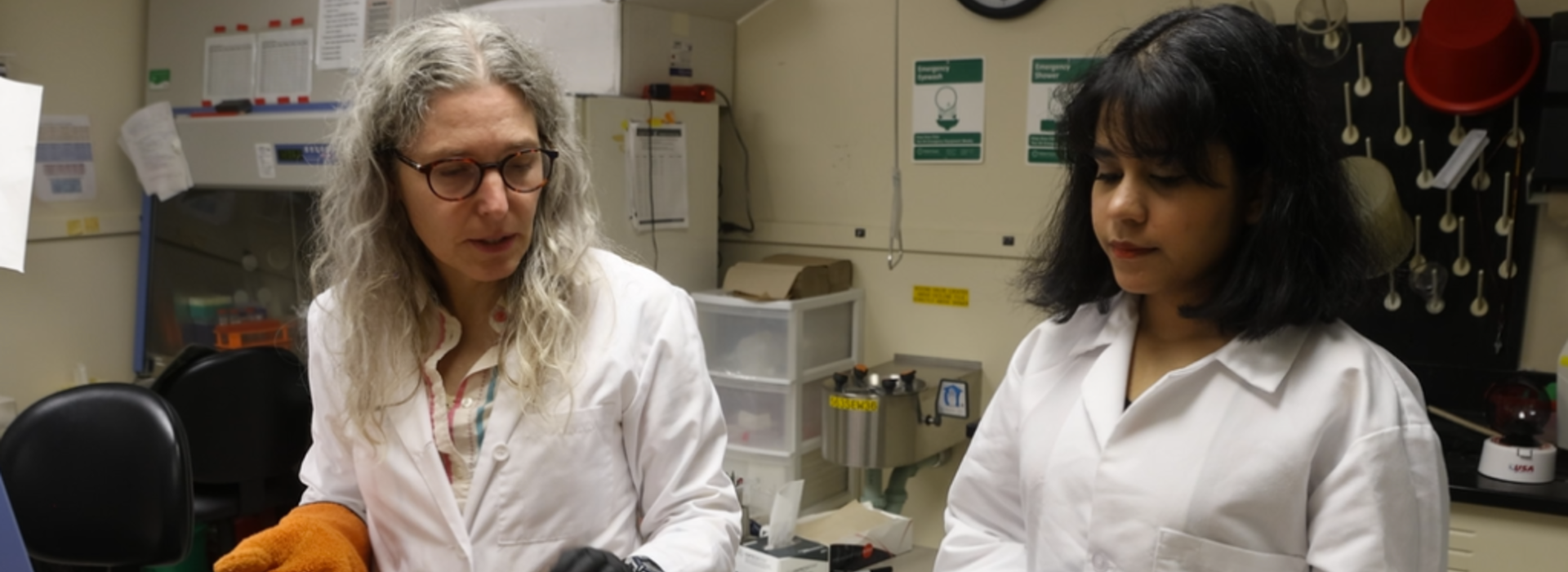
Impact of Altering Poly(A) Polymerase Proteins on mRNA Processing in Trypanosoma brucei
In her molecular parasitology lab, Dr. Sara Zimmer and team research gene expression in trypanosomes, a particular type of single-celled parasite. Species of these vector-borne protozoan parasites cause World Health Organization-designated Neglected Tropical Diseases that are endemic to poor, rural populations and for which new drug targets are urgently needed.
In a recent publication in Frontiers, Manipulation of mitochondrial poly(A) polymerase family proteins in Trypanosoma brucei impacts mRNA termini processing, Dr. Zimmer describes the effects of manipulating two proteins in the parasite Trypanosoma brucei, which causes human and livestock diseases in Africa. The two proteins appear to add nucleotides to the ends of mRNA. These additional nucleotides are called mRNA tails, and they serve as regulators of their mRNA molecules – dictating their stability and translation into protein.
"Trypanosome mitochondrial 3′ nonencoded tails have both life-stage and transcript-specific characteristics, such as their length profile and A/U composition, though how this specificity is achieved is unknown," shares Dr. Zimmer. “To better understand how the mRNA tails are generated, we compared features of the mRNA tails, such as their length, while manipulating the two proteins. We found that increasing the proteins’ abundances and mutating key sites on one of them changed mRNA tail characteristics.”
This data suggests that both of these proteins affect mRNA tail characteristics. In particular, the key sites on one of the proteins are critical to both the length and composition of the mRNA tails. In general, regulation of gene expression is critical for T. brucei and the pathogens that cause Chagas disease and Leishmaniasis to survive in their hosts.
Dr. Zimmer shares, "Together, this work furthers our understanding of the role of polymerases KPAP1 and KPAP2 on trypanosome mitochondrial mRNA 3′ tail addition, as well as provides more information on mRNA termini processing in general." Understanding the mechanisms that regulate gene expression could eventually lead to new therapeutics to treat the diseases this parasite causes. The next steps will be assessing how these changes in tail characteristics affect mRNA regulation, such as by impacting transcript stability and translational efficiency.
This research was funded by the National Institutes of Health, Canadian Institutes of Health Research, the Robert Harpur Foundation, and the University of Minnesota Graduate School Frieda M. Kunze Fellowship.